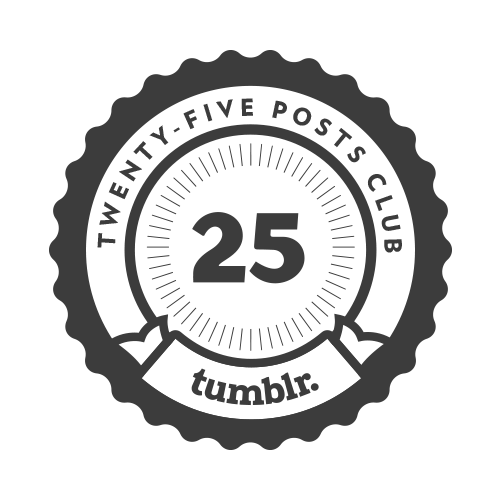Read the latest thoughts and ideas about learning design. Bringing curation to education.
Don't wanna be here? Send us removal request.
Text
Postach.io
Here's a service that helps you "collect and share content" from your storage and documentation tools (like Dropbox and Evernote). Dropbox is an easy-to-use cloud storage space, and Evernote is a fantastic way to capture and store content that you want to continue to interact with, in case you haven't heard of or even used either. But Postach.io can help you select and present this content. The shortcoming of Dropbox and Evernote is that they can seem static. There's stuff just sitting in there. They beg you to be able to look at it in a new way. Eportfolios lack strong capture functionality, making it difficult to smoothly integrate documentation into learning processes, and capture technologies lack presentation.
Postach.io brings this. It's also an organic way to go about a learning eportfolio, and is one step closer to using technology to enhance documentation design, because you play an active role in capturing content, selecting it and presenting it.
But how can we integrate learning science into learning technology? Curation Interactive likes to use these tools to help students document and present process. But we're still exploring the idea of how get features of these tools pick up some of the mechanical work of documentation design pedagogy - how to make connections, use the connections to form pathways to content and to personalize learning.
#postach.io#documentationdesign#process documentation#education curation#dropbox#evernote#personalizedlearning
0 notes
Photo
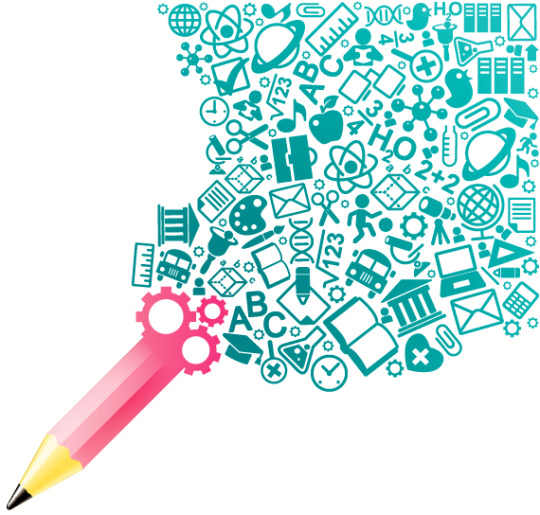
Here's another article authored for Compass Learning’s blog Navigator about using education curation as a kind of storytelling that can streamline our learning. Share your thoughts in a comment!
1 note
·
View note
Photo
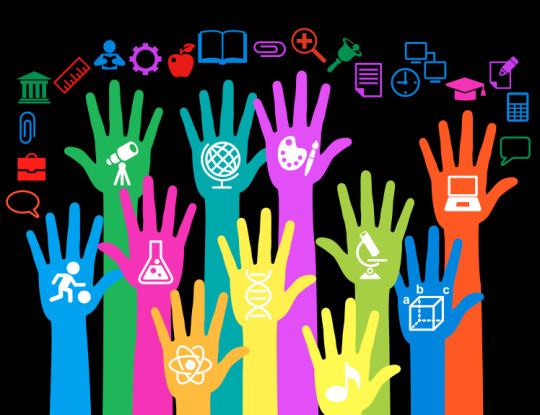
An article authored for Compass Learning’s blog Navigator, this one about learning, stories, and the integration of technology. Share your thoughts in a comment!
0 notes
Photo
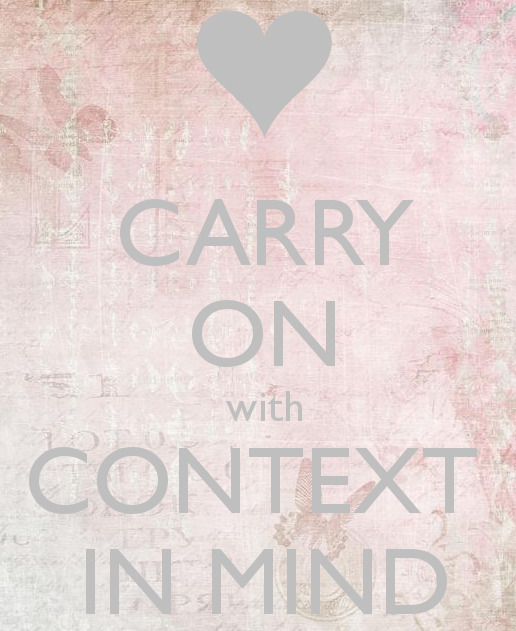
From Stephen Covey's 7 Habits of Highly Effective People to Grant Wiggins' Understanding by Design, there is plenty of strong research, literature and practice indicating we should begin with the end in mind. Additionally, there are times to consider the context of the "beginnings." Not a contradiction to Covey or Wiggins at all, there are moments to reflect on where your work has been, where it is, and where it's going--to begin with a deeper sense of the beginning in mind, and a consideration of the continuum in which that beginning is situated.
You may be working on a personal or professional project, in which case you may, as Covey writes, "envision in your mind what you cannot at present see with your eyes." Or you may be helping students meet specific goals and standards, in which case you may, as Wiggins states, "derive the curriculum from the evidence of learning (performances) called for by the standard and the teaching needed to equip students to perform." In some cases we have to imagine an end, and in others, we clearly know it, and have to make sure we get there effectively given the story of who or what we are working with. Either way, there is usually more to the story than we have time to grasp.
When There's Time to Reflect
Whether you're a scientist or poet, an artist or explorer, or all of them and more, you'd be challenged to find the beginning of your thinking, or of a project, talent or skill. There is always something that has come before. To find beginnings, we reflect. We may have nothing at our disposal but ideas, an old friend or some loosely connected, documented evidence to guide us. Especially as learners carrying out skills, working on tasks, and finding out or showing evidence of new things, beginning is usually just another way to say continuing.
While the beginning of something might actually not be that hard to articulate ("My father gave me a saxophone"; "I started learning algebra earlier than most kids, when my brother shared his perfect score on a test with me"), it's worth taking a closer look at the traces of our thinking and learning, or at how what we're working on is related to other works in theme, time or place. This is worth doing even as a short exercise to help students deepen and expand their perspective of their learning and their work. As always, learning stories, in all forms written, spoken, filmed or designed, are good ways to make something of that perspective and share it, and can both interpret and reflect the evidence of what has been learned. Learning stories can set up more intentional beginnings later on.
As an educator, I've heard the phrase, "beginning with the end in mind," quite a bit. And it's just good practice. As someone passionate about reflection, and about helping students cultivate ownership of and authenticity in their education, I thought I'd use another popular phrase to help play with that one. Actively reflect on what you're bringing to beginnings, and Carry On with the Context of Your Learning in Mind. Of course, Keep Calm too.
0 notes
Text
Can the Powerful Elements of Branding Leverage Student Engagement?
I love the idea of branding our own learning. Brands communicate purpose, differentiate, reinforce recall, and help a product connect to and enlarge its audience. How would that look in education?
Imagine a student walks into a learning space (real or virtual) with 1) a mission statement, 2) a cohesive collection of learning artifacts related to the work of that space, and 3) a short, two sentence pitch for learning (this is what I will get out of the work here, and this is how I can contribute to the work of others in this space), or advert in some chosen media. Then the student shows you 4) graphic iconography symbolizing the themes embedded in their mission, their artifacts and their pitch (a logo or seal, for example). In other words, the learner shows up with a brand (of their learning)--a brand they will bring to and develop in that learning space, with the learners and facilitators there. Brand content here would be content about one’s learning.
We should find ways to integrate stickier, student-centered information about their own learning into students’ workflows and into teachers’ student-centered curricula. The ecosystem that makes up the learner profile (reports, comments, grades, test scores and portfolios), would be richer with the elements of a brand to go along with them. We live in a world of brands, and it's a brand you world now more than ever.
There are a lot of good questions to ask as you're developing a brand, and many of them seem like pretty good questions to ask yourself about your learning. How can branding increase student engagement, reflection, recall and differentiation?
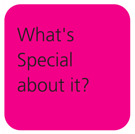
0 notes
Text
TD4Ed
http://td4ed.businessinnovationfactory.com/blog/reflections/unleashing-teachers-agency
0 notes
Link
We are glad, that this product awaits thousands of people and now we can surely say that we have made Startup Framework really awesome. What we wanted to produce at the start of our way meets up our expectations and great efforts we made while creating such a large-scaled project.
Video
Here is a short part of the video we have shot for the presentation. We have passed through the whole process of video shooting — from concept up to editing and color correcting. We must say that video shooting is very interesting and we should surely tell you about how the shootings run already after the launch of Startup Framework.
We have created a product that will help designers, developers and companies to build a website for their startups not spending much time on it. There are a lot of different blocks and samples that will help you to create a perfect site for your startup. It’s simple!
We really appreciate your interest in this project and we do our best to take into consideration your opinions and feedbacks. We already have big plans for further development of Startup Framework and we are aiming to take Designmodo to the next level. Just a bit of patience and soon you’ll see everything yourself.
If you don’t want to miss the release of Startup Framework you can subscribe to Designmodo today.
Subscribe
PS: Happy Thanksgiving Day, everyone!
Blog postStartup Design Framework First Sneak-Peek Blog postThe Second Sneak-Peek of Startup Design Framework
29 notes
·
View notes
Text
On the Fridge
In retrospect, it happened in one single moment. But it must have actually occurred gradually. Teaching English to Italian children years ago outside Reggio Emilia, Italy, I documented the funny things that happened as we acted out ridiculous theatrical productions with no direction apart from our intuitively playful fumbling journey for words between Italian, English and the universal hysterics that come of not having a clue about what someone is saying but knowing everything about what they mean. I still have journals of things kids said, ambitious lesson ideas I'd planned around the learning just about to emerge from our dramatic skits, and pictures some of them drew resembling topics from dinosaurs to architecture. One of these drawings will always stand out to me as the one that got me to think deeply about what it means to learn and to communicate how we see the world out of our own eyes. Right now, it doesn't matter what that picture was all about. What matters is what reminded me of it today: my first nephew's, first work of art on his fridge at home.
I hazard to apply the educational jargon I've learned over the past ten years to the mystique around this encounter for me. I'm not going to show the drawing, which would likely arouse boredom in any non-relative. I'll keep it simple.
There's some magic in the early artwork of a child. From even the most elementary, pencil-drawn outline of a semblance of a whisker on the idea of an animal of some ferocious yet cuddly sort, you see this new person's mind come to light. Seeing that paper on the fridge was exactly like hearing him say his first whole word. And I don't know exactly why right now, but the fridge is a darn good place for something like that.
0 notes
Text
A Way to Create, Document and Communicate
Portfolio comes from portare, “to carry," and foglio, “sheet of paper. Further back, folio comes from the latin folium, meaning “leaf,” and folium is also the term used to refer to the wrinkles on the surface of the cerebellum. The mind is a truly complex portfolio. Its contents are all interconnected, working “by association.” How can we bring that quality to the space ePortfolios (often only paper-like, text/image based formats that look like an earlier version of the Web) are working in?
We are bent on storing the information we process about ourselves and our world outside of ourselves. The media for creating, documenting and communicating what we think and learn has evolved with our drive to carry out these intelligent behaviors. From cave walls to paper to computer and beyond, we have continually enhanced our capacity to interact with content. But we could certainly get more innovative about how we can customize the way we do this throughout our education. Learning portfolios and learning management systems, ecosystems, environments are just the beginning.
Typically, a curator selects, organizes and takes care of items often exhibited in a museum. The word museum originally referred to a university building, and comes from the Greek and Latin, mouseion, “seat of the Muses.” The Muses are the 9 daughters of Zeus and Mnemosyne who preside over the arts and sciences, the likes of Calliope (epic poetry), Clio (history) and Urania (astronomy). School is the place that usually comes to mind when I think about education, and along with it, lots of paper. It makes sense that the portfolio became a useful way to present our work. But the museum and its gallery walls have always played as important a role to the bigger picture. Curation Interactive participants pay by turns artist and curator-like attention to their muses throughout the arts and sciences, and their passions beyond. That's why one of our favorite places to work is the gallery, a place we can spread out and give work the attention of a Da Vinci. While often associated with artwork, the portfolio, on or offline, will help us bring our learning to bear on itself and beyond, and it should be here to stay. Let's reimagine the niche traditionally occupied by portfolios, and think about how it overlaps with really attractive tools, including capture technologies and social media, fast-evolving forms of media that are challenging us to create, document and communicate what we know more intelligently.
2 notes
·
View notes
Text
Education As Story
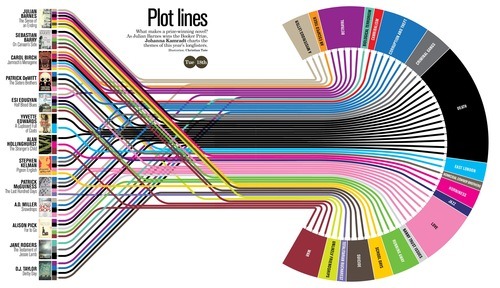
If you had to plot a day, a year or even twelve years of learning on a graph, what would your axes be and what would your plot look like? Inspired by Kurt Vonnegut's work on stories, I used to do this with my students. Some of them would use quadrants, others a totally different kind of chart, map (of the mind or of the school), maze, or elaborate drawing. This always gives way to stories about things they learned a long time ago.
From mythology to neuroscience, there’s compelling evidence that stories are central to how we understand ourselves and the world around us—that they activate our minds and provide a seamless way to help us make connections and remember things. It's no coincidence that they are vital to our lifelong learning. Despite much needed championing to keep certain kinds of storytelling in our school curricula, I can't imagine that stories, in any form, were intentionally put into our education system after some big discovery. Stories are there because we are.
By story, I mean that elegant and intuitive narrative design that accounts for everything from how you explain why you're late for dinner to how Harry Potter ended up married with children. Common core state standards are emphasizing the importance of non-fiction in the language arts curriculum. As a long time teacher of literature, I'm actually not too worried about that. I do, however, happen to like the opinion that we should account for all the non-fiction already there throughout the curriculum, and that we should be reading non-fiction in every subject. I might have been more passionate about physics if someone put a book about or by Richard Feynman into my hands. As a curriculum designer, I've even selected non-fiction texts I thought would help students make connections to other subjects. If I could make the case for one more non-fiction infusion, it would be learning processes that helped students see their own work across the curriculum and over the years as a story of their own—an infusion of ownership and authorship, i.e. how things are connected, a goal-oriented plot, or at least some narrative structure, and what it all means, including patterns, motifs, symbolism, and theme.
Some of us seem to be immersed in an authentic flow of our own learning story. Do you remember a student who always seemed to know what they were going to do, and did it, seemingly always on track? Beneath the surface of all the conscious learning we're doing, there's an underlying narrative driving our thinking and our choices. Certainly, we are all putting that narrative together every day. But how intentionally? When we look back at our lives, we can usually see it. But what about forethought? How would our learning change if we brought that underlying narrative to the surface in realtime? If we looked at how all the pieces of our learning were coming together and told the story of it while imagining its outcome along the way? We know what it looks like when we don't do that, anyway.
That kind of engaging reflection is essential to helping us review what we know, to sharing it and bringing it into a deeper understand of where it’s all going and what we're supposed to do with it. I think aiming towards this kind of storytelling will make a difference in learning outcomes and, more importantly, individual trajectory.
0 notes
Text
Education Curation as Self-Curation
There are a few things I’ve heard quite a bit while working on this project. “I didn’t realize I had this much stuff.” “I would love a way to look back at the early signs of my career path.” Another is, “Parents would love this,” referring to a service or app that would help them save and storify their child’s creations and incidental learning moments. And then it’s,“Can we curate me next?” That one really stands out to me.
There's something special about reflecting on our own learning artifacts--especially ones that have been all but forgotten. It's a unique personal history that seems to contain special elements of who you are. The artifacts of our learning might not define us. I certainly wouldn’t want any single artifact (a photograph, exam, essay, painting, performance, etc.) to stand in for who I am. And certainly any one of them might resemble anyone else’s version of the same thing. But a collection of them, intentionally storified and reflected upon, can reveal a distinctive reflection of formative experiences, interpretations and thinking. When we look at how all that thinking fits together, especially when it’s from disciplines that call on different ways of thinking, we’re bringing it all into our center and saying, “This is the role this played. It mattered this much or in this way.” "That thing I really want to do now for a living? There's an early sign of it."
Many people I grew up with talk about our major in college as if it were a decision in who we would become as people. I think career changers get a shocking sense of how much our work impacts our sense of self. A career change is a life change. But there’s a strong connection between what and how we learn early on and our sense of who we are. It starts very early. If we’re shaped to any extent by our education (by our parents, our teachers, our media and culture, and by our own decisions throughout it all), then it seems like curating the content of it would be to some extent the curation of who we are. Education curation is definitely about content--about math, science, the arts, etc. But it’s also a process of self-direction in the place where they all meet.
1 note
·
View note
Text
Bring Your Own Learning
BYOD (bring your own device) is the well-known term for the practice of using your personal computing device in workplace settings. The strategy is being embraced everywhere from the school house to the White House.
This is the perfect time to make BYOL happen, and to create intersections of social media and educational content.
From year to year, students learn more, consume more and produce more, but repeatedly show up for new coursework and classes as blank slates with blank notebooks, empty folders and space to fit all the new things they're going to learn. This is understandable because that's the way we've always done it (#ttwwadi).
But curation is partly motivated by the desire to change that, to get students to aggregate their learning and continually bring it with them to new learning spaces, treating new work as an extension of and addendum to their prior learning. Continuously adding on would become an anywhere, anytime way of learning. Drop and mix new content with old associated content, for example.
This kind of BYOL can happen in isolated moments, too. Make room in the curriculum to have a day or a week when students bring or continue working on a knowledge product or learning artifact they thought they might have left behind. It could be a project or test from years ago which connects to something you're doing now. Or it could be some notes that never really got used. Maybe it's already in a personal device. BYOD and BYOL!
0 notes
Text
Connections
I think I've used the word "connections" as much or more than the word "curation" over past couple of years. I revisited a Howard Gardner book on my shelf recently. He starts his chapter on The Synthesizing Mind with a great quote.
"Hell is a place where nothing connects to nothing." Ok, we get the point. When nothing connects to nothing, you're in a difficult place. If there's a polar opposite of that place in the education space, it's one where everything connects, and connects meaningfully. You don't want to be moving from task to task, class to class, course to course, year to year, failing to build some critical mass of connections between much of it.
0 notes
Text
Principles
Agency » How can we design (and direct) the course of our own learning? A kind of autobiographical, documentary storytelling, Project Curation challenges us to become the designers of our educational narrative. Our initial challenge is to select content we’ve aggregated over the course of our learning so that from there, we can deal with the challenge of building a narrative out of that content. The design thinking we engage in throughout this process makes it all too clear that we might not have looked at our learning in real time as the creation of content that we would use to tell a story at all. We were waiting for it to add up to something. But what? The project is meant to make us think about our role in our learning, and to inspire strategies and tools for curating our learning as we go.
Authenticity » What and how do we think? Whether its coming up with powerful and innovative ideas and ways of applying them or memorizing facts, thinking authentically is a vital capacity. When learning is designed for authenticity, it incorporates our own ways of thinking and helps us check in with our most candid thoughts even as we’re demonstrating our understandings of disciplinary standards. Authenticity means making learning relevant to the world of practice emerging around us too. If we don’t habitually make our learning relevant and meaningful to ourselves and to the world around us, why would we expect it to wind up at a meaningful and relevant place? Read an article about authentic thinking in writing processes, published in the Summer 2012 issue of Teachers & Writers Magazine.
Longitude » As children, it’s unlikely we complete assignments with a sense of how each fits into and builds the story of our learning. In retrospect though, the continuum of our learning becomes a little clearer; we can think longitudinally looking backwards. What sort of strategies and tools could immerse us in our learning at the same time as they help us look at it as a continuum? As we move from one discipline to the next, one year to the next, we should be making connections that sustain longitudinal, lifelong meaning-making processes so that we become more attuned to the cohesiveness, longevity and direction of our learning experiences. Mobile technology is providing us this opportunity. It helps us express our thinking on the go, dropping it into an accumulation of documented moments. There is a wonderful potential in this lifelogging to leverage lifelong learning--to inspire this kind of activity in and between the spaces of our assignments, courses and grade years.
0 notes
Text
Technology and Curation
Stanley Fish makes an important point about form and content in How to Write a Sentence and How to Read One:
It is true that you can't get from form to content, but it is also true that without form content cannot emerge.
First, curation is heavy cognitive lifting. It takes a long time and lots of space. And it should. But this makes it hard to do in real time (while we're producing knowledge products) and in formal learning spaces with entire groups. Second, it doesn't matter whether it's a real box, file, wall, or portfolio, or virtual versions of these, they are still often just containers and spaces full of static content. We have all of this wonderful content, but it's locked and has nowhere else to go. How can we unlock it, interconnect it all and bring it back to life?
What's unique about knowledge products (the discrete assessments we model as representative of learning), as opposed to any isolated bit of information posted here or there, is how much thinking, practice and knowledge is packed into them. This is what sets them apart from all the bits and traces of learning we share as we express ourselves throughout a learning process. When these bits and traces are documented as we learn, then they can make the learning inside the knowledge products visible, and this is why it's so important to document the learning processes.
But curation takes it beyond that, and needs help from technology. What is it the knowledge products all add up to? Each of them (an essay, a test, a lab, a dance, a musical composition, an equation, a map) has its own structure, its own thinking, its own rules, which define its assessment. Can we bring a similar kind of structure to a collection of knowledge products that we can continue to interact with?
While I take this teaching, learning and curriculum design journey, I invite technologists to discuss how storage spaces can keep content alive and give knowledge new life, to imagine a technology that facilitates or even mimics what I'm developing here as a practice. What would it look like and what form would it take? Would it be like a story? What kind? What about a presentation? Would it be linear? Would it just provide us with an easier way to connect it all? What if it told itself, and we could just drop stuff in it and continue to watch it evolve?
I imagine a utility that preserves and even engages in the learning process. We trust that what we learned played a role in what and how we think, and that our grades and colleges and jobs and ideas are the products. Sure. But go back to that central image. What else is that child trying to do ? Help us help him do it better.
2 notes
·
View notes
Text
Best Made Projects
You graduate from high school, and you get a paper diploma. That's actually redundant. Diploma means "folded paper." Imagine the artifacts of your learning spanning at least a decade were recycled into a diploma. Now it's literally made of what you learned. That would be neat. But imagine the diploma wasn't just symbolic of your learning, and did something that expressed everything it stood for, everything that was in it.
You can go back and make such a knowledge product in retrospect. So far, that's what curation is. We take educational artifacts that haven't been constructed to relate to others (that's mostly all of them by the way) and make them do so. But I'm suggesting we get better at doing this in real time, in a way that parallels our education, so that the learning we're doing in a course, and every artifact we create there, has an immediate purpose and plays an immediate role in building something. This doesn't have to change a school's entire culture. It could. It could also construct a school. But it could also be incorporated by individuals, teams or communities that get it and like it.
This kind of imaginative, constructive activity is not only fundamental to learning; it's fundamental to being human. As Denis Dutton writes in The Art Instinct: Beauty, Pleasure, and Human Evolution, it "is integrated into our nature by evolution." We want our learning to construct something useful. We want to use our imagination to conceive of it, bring it into a form others can see, and interpret it ourselves.
1 note
·
View note
